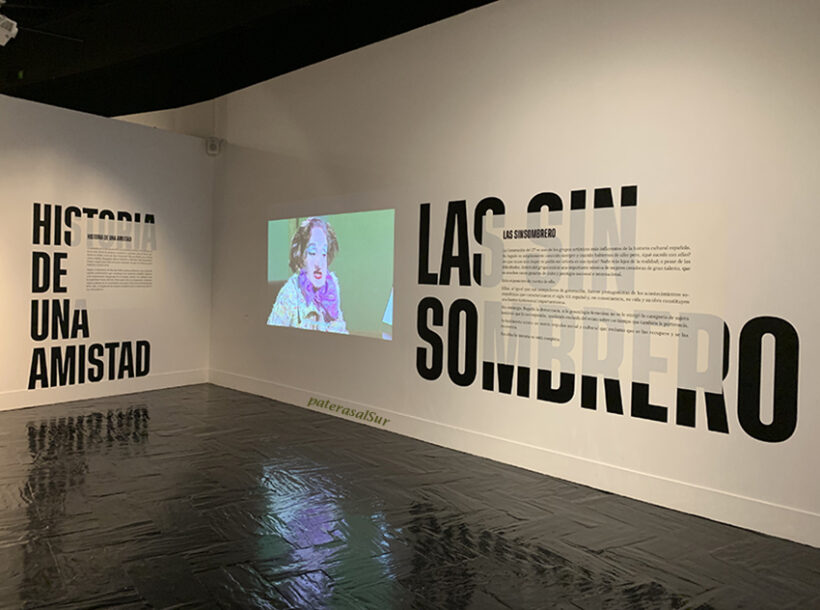The exhibition “Las Sinsombrero” at the Fernando Fernán Gómez Theatre, Centro Cultural de la Villa in Madrid, opened on 19 October 2022 and will be open until 15 January 2023.
By Iñaki Cháves
They are yet another of the countless women excluded from official history anywhere on the planet. To draw attention to their lives and works and bring them to the present day is to pay a historical debt that weighs down the commitment to our memory and the quality of our democracy.
Maruja Mallo, one of the Sinsombrero, welcomes you at the entrance of the exhibition with a video in which she remembers the sad event that Lorca, Margarita Manso, Dalí and herself suffered in Madrid’s Puerta del Sol. They were stoned for taking off their hats, as if they had made “a discovery like Copernicus or Galileo”, they were treated as if they were “faggots”, as if taking off their hats was “a manifestation of the third sex”. Because, in their own words, wearing a hat was like “a prognosis of social difference”.
Curated by Tània Balló, author of three books related to these Spanish artists and intellectuals of the early 20th century, Las Sinsombrero. Without them, history is not complete, Las sinsombrero 2. Hidden and impeccable and I don’t want to forget everything I know. Las sinsombrero 3, the exhibition makes a more than remarkable journey through a plethora of women from different disciplines of letters and arts as relevant as they were ignored and who were, at least, at the same level as their generation mates.
Women of history whose stories enrich the general history of a country that does not seem to want to remember and, when it does, remembers it selectively. They were “part of and witnesses to the socio-political events that characterised the Spanish 20th century… they and their work are an extremely important testimonial source that allows us to gain first-hand knowledge of the vicissitudes of that time, not only from an artistic and intellectual perspective but also from the female point of view, which has rarely been highlighted”.
Rosa Chacel, Ernestina de Champourcín, Marga Gil-Roësset, María Teresa León, Maruja Mallo, Margarita Manso, Concha Méndez, Josefina de la Torre, Ruth Velázquez and María Zambrano form part of this great work of research and documentation that offers us a historical opportunity, like the history of these women, which should open our eyes and minds so that we are not constrained by the danger of a single history, that which is generally written by men and which, in the case of armed conflict, only contains the vision of those who narrate it and who tend to be on the winning side (if there are winners in a war).]\
 The political commitment of this group of women “Sinsombrero” (photo: Iñaki Chaves).
The political commitment of this group of women “Sinsombrero” (photo: Iñaki Chaves).
(photo: Iñaki Chaves)
“Las Sinsombrero” are essential, as is the documentary of the same title produced by RTVE and released in 2015, in which that necessary look is collected to fight against “the blind spots of history”, of a story that has not been told in its entirety in a Spain still stagnant and full of prejudices that never vindicated its women artists as they deserve.
In this link you can find more information about the exhibition and access the didactic guide and the activity booklet that complement it and that are good educational resources for us to learn about our history and collaborate so that our student population also knows it without the shortcomings that those of us who were educated during an era of concealment of our own reality suffered. You can also access to the transmedia project “Las Sinsombrero” to deepen in the legacy of all these great women and great artists.
If you happen to be in Madrid, don’t miss the opportunity to visit the exhibition. If you can’t, read about them and browse the website of the exhibition. I would say it is essential.










